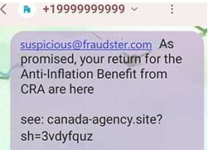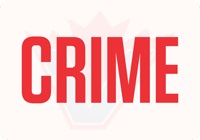THE 2017 Fall Report of the Auditor General of Canada on the call centres of the Canada Revenue Agency says that the Agency’s nine call centres across Canada did not provide taxpayers with timely access to call centre agents.
“Based on our test results, agents gave taxpayers information that was not accurate almost 30 percent of the time. While the Agency reported that it met its targets for both access and timeliness, its performance measures were incomplete and its call centres’ results were overstated,” the report noted.
The report said: “Overall, we found that the Canada Revenue Agency gave taxpayers very limited access to its call centre services, including both the automated self-service system and call centre agents.
“We found that the Agency blocked more than half of the calls it received (about 29 million out of 53.5 million) because it could not handle the volume. Blocked calls were those that did not reach either an agent or the automated self-service system. Instead, they were given either a busy signal or a message to go to the website or call back later. This means that each caller made an average of three or four call attempts per week. Even after several attempts, some callers did not always reach an agent or the automated self-service system.
“This finding matters because taxpayers need timely access to accurate information to help them prepare their tax returns and to ensure that their benefits are correct. For callers who do not have Internet access, the call centres may be the only way for them to ask for information.”
Regarding accuracy, the report said: “When agents responded to our tax questions, they gave us wrong information almost 30 percent of the time. This meant that the actual rate of agent errors was significantly higher than the Canada Revenue Agency’s own test results. One reason for the high rate of incorrect responses could be gaps in training. Another could be that agents must use too many different applications to look for answers. We also found that the Agency’s National Quality and Accuracy Learning Program did not test the accuracy of agents’ responses effectively or independently.
“This finding matters because the Agency made a commitment under the Taxpayer Bill of Rights to give taxpayers accurate information. To do this, the Agency has to know what percentage of call centre agent responses are wrong, and use that information to improve both the training and information available to agents.”
Regarding reporting, it said: “Overall, we found that the Canada Revenue Agency’s public reporting overstated its call centres’ results. The reporting did not account for the Agency’s blocking of about 29 million calls, more than half its total call volume. These are the calls that received a busy signal or a message to go to the website or call back later.
“According to the Agency, about 90 percent of callers are connected to either the automated self-service system or a call centre agent. By blocking and redirecting calls, the Agency was able to report that it had met its targets for all telephone lines. However, when blocked calls are factored in, the Agency’s overall success rate was 36 percent.
“This finding matters because the Agency needs performance measures that reflect callers’ experiences in order to improve its services. Its current reporting methods did not lead to improvement, nor did they accurately inform the public of the Agency’s actual level of service.”












